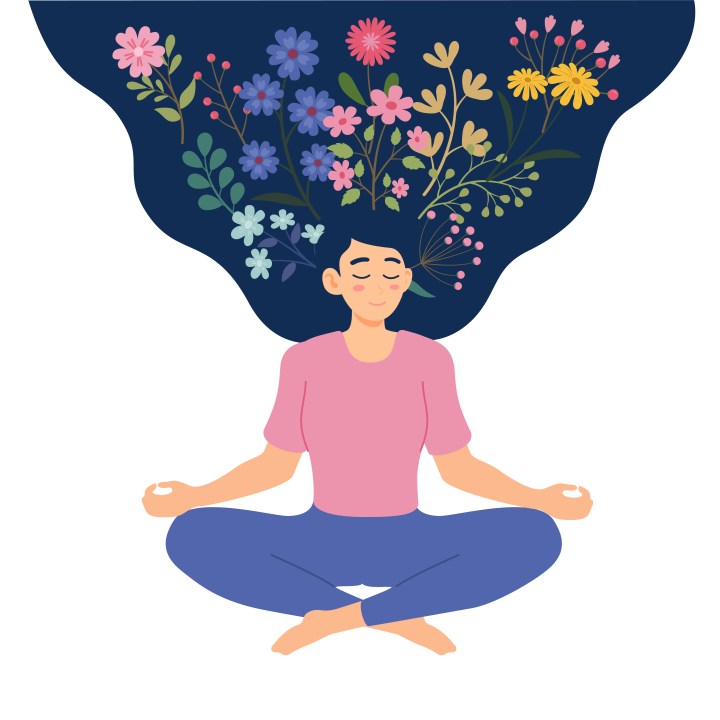Tampa (BLOOM) – Habits are an integral part of our lives. They shape our daily routines, our behaviors, and even our thoughts. While some habits are positive and help us achieve our goals, others can be detrimental to our health, relationships, and overall well-being.
The power of habits lies in their ability to create patterns that our brain can automatically execute, making them hard to break. In this article, we will explore why our brain resists change and how to overcome it.
The Science of Habits

Habits are automatic patterns of behavior that are repeated regularly. These behaviors become automatic through a process called habituation. When we perform an action repeatedly, our brain creates a neural pathway that makes the action easier to execute. The more we repeat the action, the stronger the neural pathway becomes until it becomes an automatic habit.
The Habit Loop
The habit loop consists of three components: the cue, the routine, and the reward. The cue is the trigger that initiates the behavior. The routine is the behavior itself. The reward is the positive outcome that reinforces the behavior. The habit loop explains why habits are hard to break. When we encounter a cue, our brain automatically executes the routine to get the reward.
Why Our Brain Resists Change
Our brain resists change because it likes to conserve energy. The basal ganglia, the part of the brain responsible for habit formation, is always seeking ways to conserve energy. When we perform a behavior that has become a habit, our brain does not have to work as hard to execute the behavior, so it conserves energy. When we try to change a habit, our brain must work harder to execute the new behavior, which it perceives as a threat to its energy conservation.
The Importance of Habituation
Habituation is the process by which our brain becomes desensitized to a stimulus. When we encounter a stimulus repeatedly, our brain starts to pay less attention to it. This is why we can become accustomed to negative behaviors that are harmful to us. When we perform a negative behavior repeatedly, our brain habituates to the negative stimulus, making it harder to recognize the negative consequences of the behavior.
The Influence of Social Conditioning
Social conditioning plays a significant role in habit formation. We learn behaviors through observation and imitation of others. If we observe negative behaviors being rewarded in our social environment, we are more likely to adopt those behaviors ourselves. Social conditioning can also make it harder to break negative habits, as we may face social pressure to maintain the behavior.
Identifying Triggers and Rewards
To break a habit, we must first identify the cue that triggers the behavior and the reward that reinforces it. Once we identify the cue and reward, we can substitute a positive behavior for the negative one.
Substituting Positive Habits for Negative Ones
To break a negative habit, we must substitute a positive habit for the negative one. For example, if we have a habit of snacking on junk food when we are bored, we can substitute a healthier habit, such as going for a walk, when we feel the urge to snack.
Creating a Supportive Environment
Creating a supportive environment can make habit change easier. For example, if we want to start exercising regularly, we can join a gym or a fitness class, which will provide a supportive environment and positive social reinforcement.
Using Mindfulness and Self-Awareness to Change Habits
Mindfulness and self-awareness can help us become more aware of our habits and the triggers that initiate them. By becoming more aware of our habits, we can begin to change them.
The Importance of Consistency and Persistence
Breaking a habit takes time and effort. It is essential to be consistent and persistent in our efforts to change. It is important to set realistic goals and to celebrate small successes along the way.
The Impact of Technology on Habit Formation

The rise of technology has significantly impacted the way we form habits. With the prevalence of social media, smartphones, and other technological devices, we are more connected to our devices than ever before. The constant use of technology has created new habits, such as mindlessly scrolling through social media or checking our phones every few minutes.
Research has shown that technology affects our brain’s ability to form habits. Our brains are wired to seek out rewards, and technology provides instant gratification in the form of likes, comments, and notifications. As a result, we become addicted to the rewards that technology provides and form habits around our use of technology.
Negative technology habits can have significant consequences on our well-being, such as decreased productivity, poor sleep, and increased stress and anxiety. It is essential to be mindful of our technology use and to set boundaries around our use of technology to prevent negative habits from forming.
However, technology can also be used to break negative habits and form positive ones. There are many apps and websites available that are designed to help people break negative habits, such as smoking or overeating, and form positive habits, such as exercising or meditating. These apps and websites use the science of habit formation to help users replace negative habits with positive ones.
Technology has had a significant impact on the way we form habits. While negative technology habits can have adverse effects on our well-being, technology can also be used as a tool to break negative habits and form positive ones. It is essential to be mindful of our technology use and to use technology intentionally to create positive habits that enhance our well-being and happiness.
The Impact of Stress and Anxiety on Habits
Stress and anxiety can significantly impact our brain’s ability to form and break habits. When we experience stress or anxiety, our brains release cortisol, a hormone that activates the fight or flight response. Cortisol can affect the brain’s reward center, making it more challenging to resist negative habits.
Research has shown that stress and anxiety can cause us to turn to negative habits as a coping mechanism. For example, some people may turn to overeating or smoking to deal with stress or anxiety. Over time, these negative habits can become ingrained in our behavior and can be challenging to break.
Furthermore, stress and anxiety can make it harder to form positive habits. When we are stressed or anxious, our brains are focused on survival and are less able to focus on forming new habits. This can make it harder to stick to a new habit, such as exercising regularly or eating healthily.
However, it is possible to break negative habits even when we are experiencing stress and anxiety. Mindfulness and self-awareness can be powerful tools for breaking negative habits. By becoming more aware of our thoughts and emotions, we can learn to identify the triggers that lead us to turn to negative habits as a coping mechanism. We can then develop healthier coping mechanisms, such as exercise, meditation, or deep breathing, that help us deal with stress and anxiety in a more positive way.
Stress and anxiety can significantly impact our brain’s ability to form and break habits. Negative habits can become ingrained as a coping mechanism, while stress and anxiety can make it harder to form positive habits. However, by using mindfulness and self-awareness, we can identify the triggers that lead us to turn to negative habits and develop healthier coping mechanisms that enhance our well-being and happiness.
The Importance of Mindfulness and Self-Awareness in Breaking Negative Habits

Mindfulness and self-awareness are essential skills for breaking negative habits. They allow us to become more aware of our thoughts, emotions, and behavior patterns and to identify the triggers that lead us to engage in negative habits. By developing mindfulness and self-awareness, we can become more intentional about our behavior and make more conscious choices about how we respond to stress and anxiety.
One effective way to develop mindfulness and self-awareness is through meditation. Meditation involves focusing our attention on the present moment and becoming more aware of our thoughts and emotions. Over time, meditation can help us develop a greater sense of self-awareness and become more mindful of our behavior patterns.
Another way to develop mindfulness and self-awareness is through journaling. Writing down our thoughts and emotions can help us become more aware of our behavior patterns and identify the triggers that lead us to engage in negative habits. By keeping a journal, we can track our progress in breaking negative habits and celebrate our successes along the way.
Finally, seeking support from others can also help us develop mindfulness and self-awareness. Talking with friends, family, or a therapist can provide us with a different perspective on our behavior and help us identify the triggers that lead us to engage in negative habits. By seeking support, we can develop a greater sense of self-awareness and become more intentional about our behavior.
Mindfulness and self-awareness are powerful tools for breaking negative habits. By developing these skills through meditation, journaling, and seeking support from others, we can become more aware of our behavior patterns and make more conscious choices about how we respond to stress and anxiety. By using these tools, we can break negative habits and enhance our well-being and happiness.
The Science of Addiction: How Habit Formation Can Fuel and Overcome Addiction
Addiction is a severe form of habit formation that can hijack the brain’s natural habit-forming pathways. When we engage in addictive behaviors, such as drug use or gambling, our brains release large amounts of dopamine, a neurotransmitter that plays a key role in reward and motivation. Over time, the brain becomes conditioned to seek out these addictive behaviors as a way of obtaining the dopamine reward.
The science of habit formation can help us understand how addiction works and how we can overcome it. One key principle of habit formation is the idea of cue, routine, and reward. In addiction, the cue might be a particular environment or feeling, the routine might be engaging in addictive behavior, and the reward might be the dopamine release. By identifying the cues and rewards associated with addictive behavior, we can begin to break the cycle of addiction by replacing the routine with a healthier behavior.
Another important principle of habit formation is the idea of gradual change. Breaking an addiction requires making small, gradual changes to our behavior over time. By setting achievable goals and celebrating our successes along the way, we can build momentum and create positive momentum towards overcoming addiction.
Finally, seeking support is crucial in overcoming addiction. Whether through therapy, support groups, or other forms of community support, seeking help from others can provide us with the accountability and encouragement we need to overcome addiction.
Addiction is a severe form of habit formation that can hijack the brain’s natural habit-forming pathways. By using the science of habit formation to understand the cues, routines, and rewards associated with addiction, making small, gradual changes to our behavior, and seeking support from others, we can overcome addiction and live a happier, healthier life.
Making Positive Habits Stick: Strategies for Long-Term Success

Developing positive habits is an important step towards achieving our goals and living a healthier, happier life. However, many people struggle to maintain positive habits over time.
Here are some strategies for making positive habits stick in the long-term:
- Start small: When it comes to developing positive habits, it’s important to start small. Instead of trying to make drastic changes to your behavior overnight, focus on making small, achievable changes. For example, if you want to start exercising more, start by going for a 10-minute walk each day and gradually increase the time and intensity of your workouts over time.
- Make it a routine: Creating a routine around your positive habits can help make them more automatic and easier to maintain over time. For example, if you want to start meditating each day, set aside a specific time and place for your meditation practice, such as first thing in the morning in a quiet corner of your home.
- Track your progress: Tracking your progress can help you stay motivated and accountable as you work towards developing positive habits. Whether through a journal, app, or calendar, tracking your progress can help you celebrate your successes and identify areas where you need to improve.
- Stay accountable: Finding an accountability partner or group can help you stay motivated and committed to your positive habits. Whether it’s a workout buddy, a support group, or a coach, having someone to hold you accountable can make all the difference in sticking to your habits over time.
- Focus on the benefits: Finally, focusing on the benefits of your positive habits can help you stay motivated and committed over time. Whether it’s increased energy, better health, or a greater sense of well-being, reminding yourself of why you started your positive habits in the first place can help you stay on track when the going gets tough.
Making positive habits stick in the long-term requires a combination of starting small, creating a routine, tracking progress, staying accountable, and focusing on the benefits. By using these strategies, you can make positive habits a permanent part of your life and achieve your goals for a healthier, happier future.
In conclusion, habits are powerful, automatic patterns of behavior that are hard to break. Our brain resists change because it likes to conserve energy, and habits are the brain’s way of doing so. However, by understanding the science of habits, we can learn how to break negative habits and form positive ones. We can do this by identifying triggers and rewards, substituting positive habits for negative ones, creating a supportive environment, using mindfulness and self-awareness, and being consistent and persistent in our efforts. By taking these steps, we can overcome the brain’s resistance to change and create lasting, positive habits that enhance our well-being and happiness.







